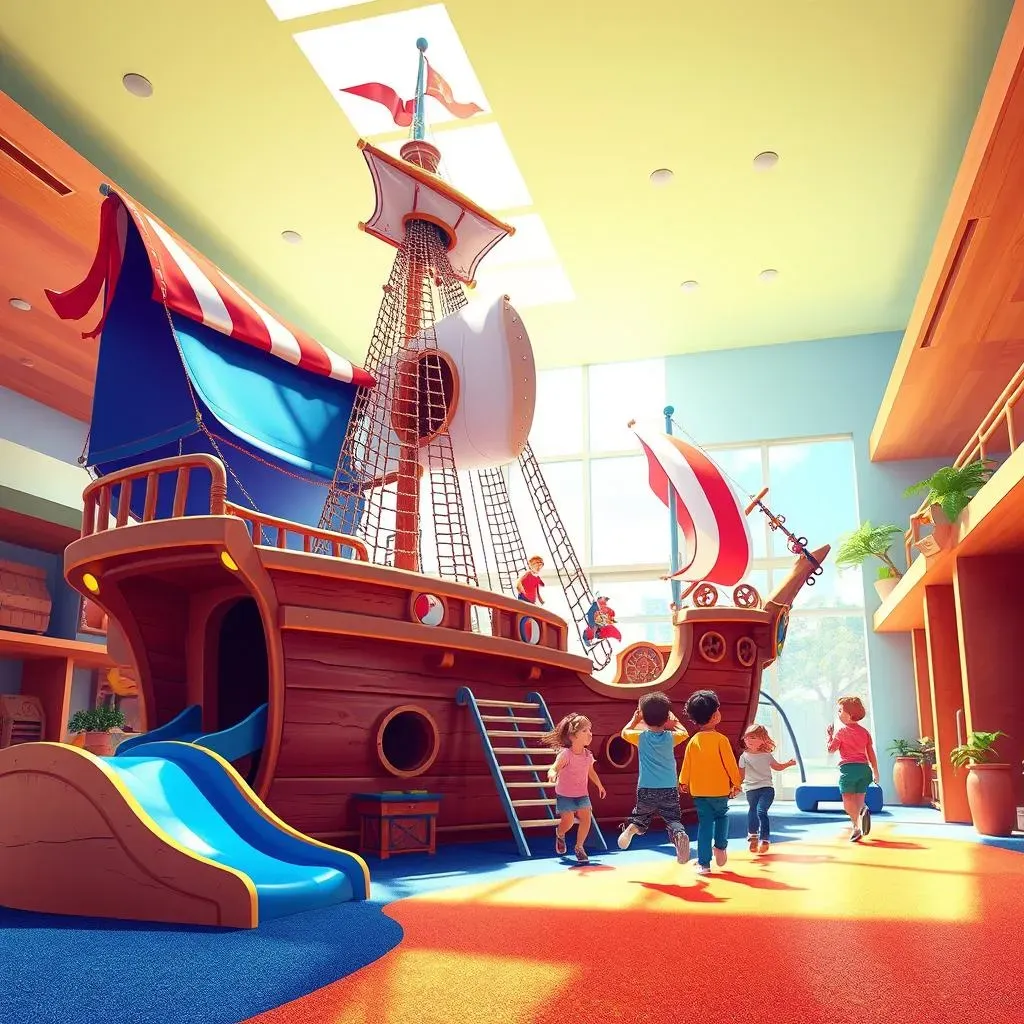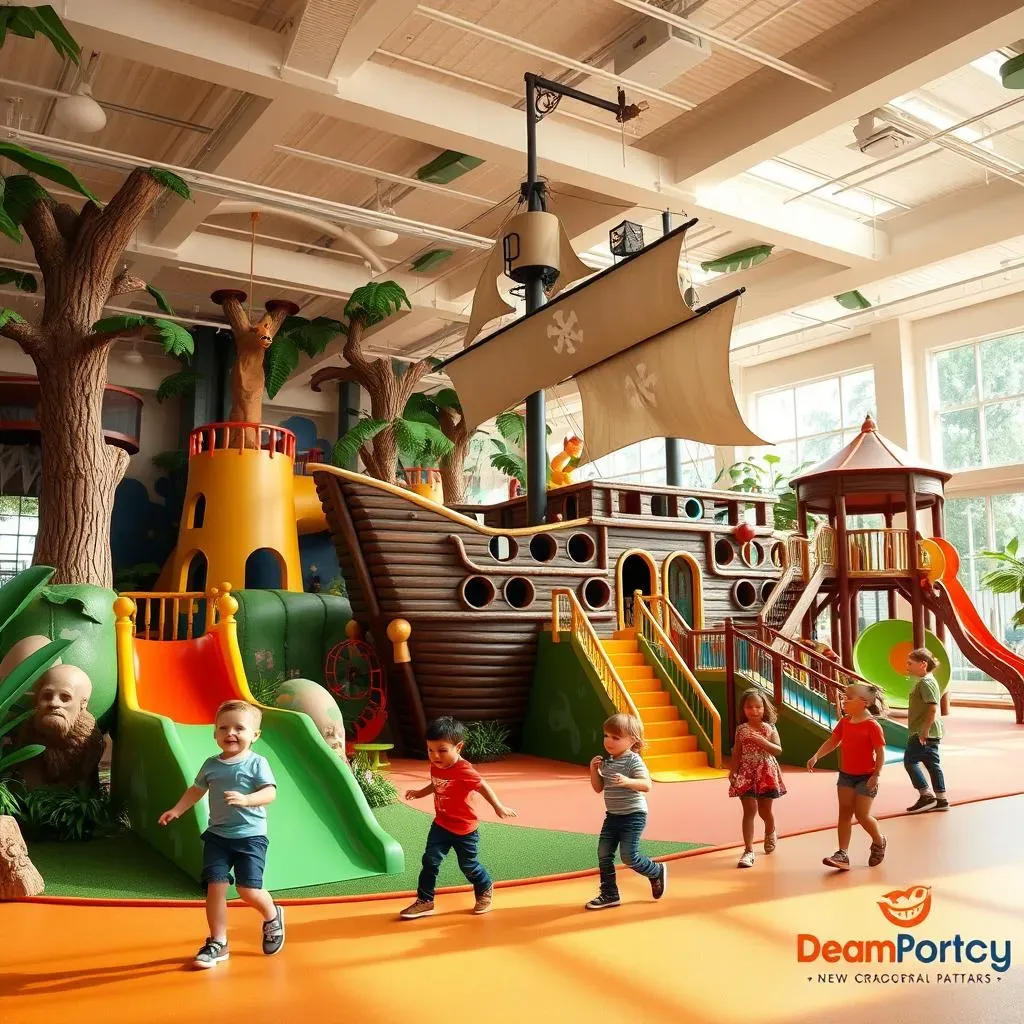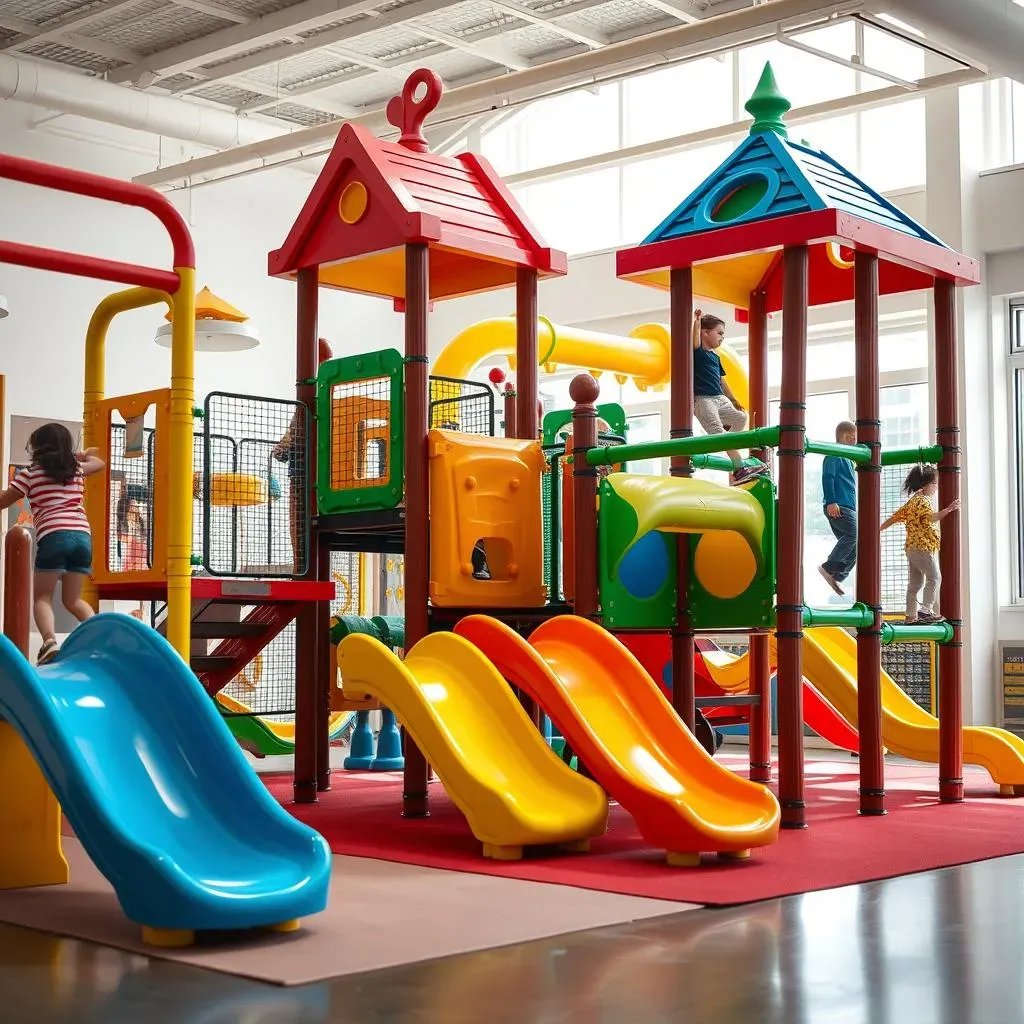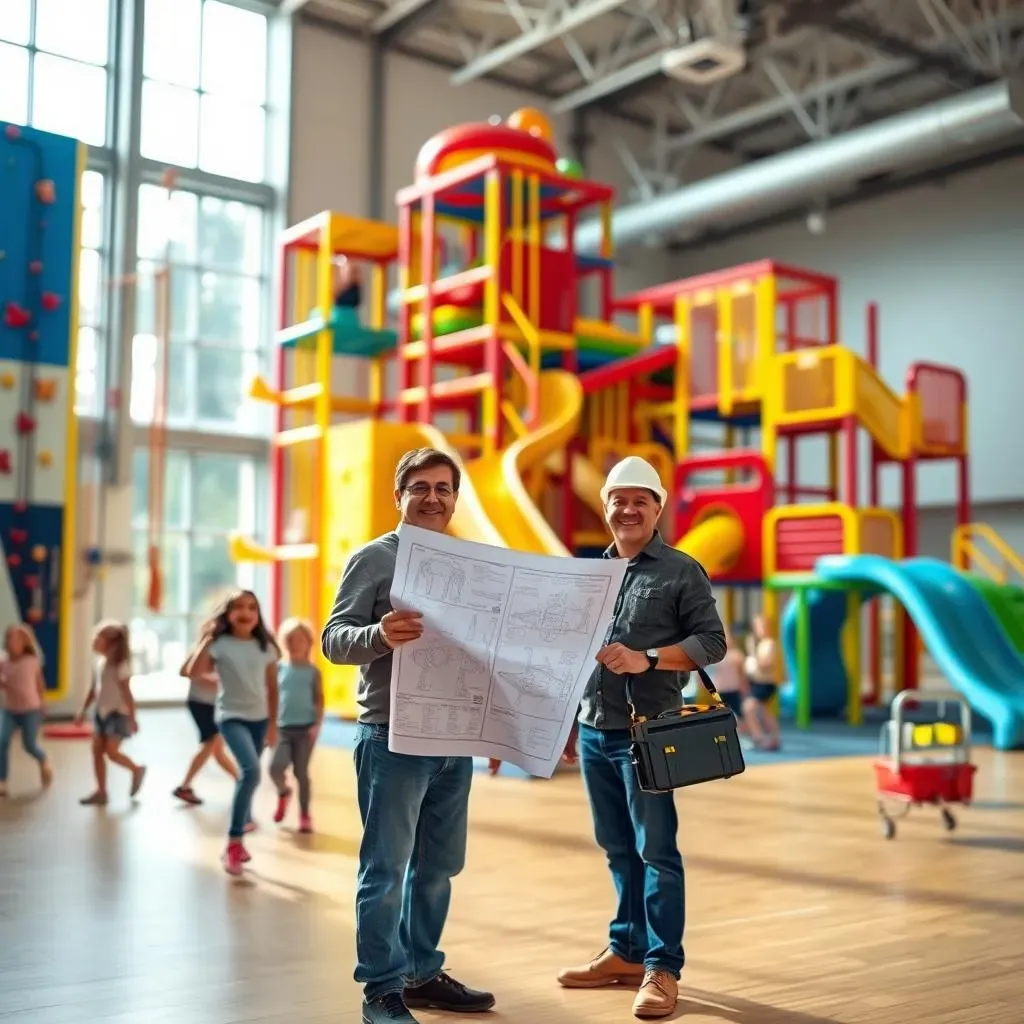Table of Contents
Tired of the same old, cookie-cutter playgrounds? Imagine a space where kids' imaginations run wild, a place tailored perfectly to their energy and your vision. That's the power of custom indoor playground equipment. This isn't just about buying pre-made structures; it's about crafting an environment that sparks joy, encourages physical activity, and maximizes the potential of your available space. Whether you're designing for a daycare, a family entertainment center, or even a unique play area in your home, the possibilities are endless. This article dives deep into the world of custom indoor playgrounds. We'll explore why choosing a custom design is a game-changer, what key factors you need to consider during the design process, and the benefits of incorporating soft play elements. We'll also guide you through selecting the right materials to ensure safety and durability, and provide practical advice on budgeting and installation. Get ready to unlock the secrets to creating a truly unforgettable play experience!
Why Choose Custom Indoor Playground Equipment?

Why Choose Custom Indoor Playground Equipment?
Unleashing Creativity and Imagination
Forget the generic, mass-produced playgrounds that look the same everywhere you go. With custom indoor playground equipment, you have the power to create a truly unique and engaging space that sparks children's creativity and imagination. Think themed playgrounds that transport kids to fantastical worlds, obstacle courses that challenge their physical abilities, or interactive play structures that encourage problem-solving and teamwork. A custom design allows you to tailor the playground to your specific vision and create an environment that is both stimulating and fun.
Imagine a pirate ship-themed playground with rope ladders, slides that mimic crashing waves, and hidden treasure chests filled with soft play balls. Or perhaps a jungle-themed playground with climbing walls that resemble vines, tunnels that lead to hidden grottos, and sound effects that bring the rainforest to life. The possibilities are truly endless when you unleash your creativity and design a custom indoor playground that is as unique as the children who will be playing on it.
Maximizing Space and Functionality
One of the biggest advantages of custom indoor playground equipment is the ability to maximize the use of your available space. Whether you have a small, oddly shaped room or a large, open area, a custom design can be tailored to fit your specific dimensions and layout. This means you can create a playground that is both functional and aesthetically pleasing, without wasting any valuable space.
A custom design also allows you to incorporate specific features and activities that meet the needs of your target audience. For example, if you're designing a playground for toddlers, you might want to include soft play areas with gentle slopes and padded surfaces. If you're designing a playground for older children, you might want to include more challenging obstacles and interactive games.
Standing Out from the Crowd
In today's competitive market, it's more important than ever to stand out from the crowd. Custom indoor playground equipment can help you do just that by creating a unique and memorable play experience that sets you apart from your competitors. A well-designed custom playground can become a destination in itself, attracting families and generating buzz. It's also a great way to reinforce your brand identity and create a lasting impression on your customers.
Consider adding custom branding elements to your playground, such as your logo, colors, and tagline. You can also incorporate interactive elements that promote your brand or tell your story. For example, a restaurant could create a playground that features oversized versions of their menu items, while a museum could create a playground that showcases historical artifacts.
Here's a quick comparison of custom vs. pre-designed playgrounds:
Feature | Custom Playground | Pre-Designed Playground |
|---|---|---|
Uniqueness | Highly Unique | Generic |
Space Optimization | Excellent | Limited |
Branding Opportunities | Extensive | Minimal |
Cost | Potentially Higher | Generally Lower |
Key Considerations When Designing Custom Indoor Playgrounds

Key Considerations When Designing Custom Indoor Playgrounds
So, you're ready to dive into designing your own custom indoor playground? Awesome! But before you start sketching out pirate ships and jungle gyms, let's talk about the key things you need to keep in mind. Designing custom indoor playgrounds isn't just about fun; it's about safety, accessibility, and creating a space that kids will love for years to come. First, think about the age range of the children who will be using the playground. A playground designed for toddlers will have very different features than one designed for older kids. Consider the developmental needs of each age group and choose equipment and activities that are appropriate for their abilities.
Next, safety is paramount. Ensure your design adheres to all relevant safety standards and regulations. This includes things like fall heights, impact-absorbing surfaces, and proper spacing between equipment. Don't skimp on safety features – it's not worth the risk. Accessibility is another crucial consideration. Make sure your playground is inclusive and accessible to children of all abilities. This might include ramps, wide pathways, and adaptive equipment. Think about how children with mobility limitations, sensory sensitivities, or other special needs can participate and enjoy the playground alongside their peers.
Finally, think about the overall theme and aesthetic of your playground. Do you want it to be bright and colorful? Or more natural and organic? Consider the existing décor of your space and choose a theme that complements it. You can also incorporate custom branding elements to reinforce your brand identity.
Here's a checklist to get you started:
- Age range of users
- Safety standards and regulations
- Accessibility for all abilities
- Theme and aesthetic
- Budget
The Benefits of Soft Play in Custom Indoor Playground Equipment

The Benefits of Soft Play in Custom Indoor Playground Equipment
Let's talk about soft play – the unsung hero of custom indoor playground equipment! It's more than just padding; it's a game-changer for safety, creativity, and overall fun. Think about it: soft play areas are like giant, huggable sculptures that invite kids to climb, tumble, and explore without the fear of hard landings. This is especially important for younger children who are still developing their motor skills and coordination. By incorporating soft play elements into your custom playground, you're creating a safe and supportive environment where kids can push their limits and build confidence.
But the benefits of soft play go beyond safety. Soft play elements can also be used to create unique and engaging play structures that spark children's imaginations. Think soft blocks that can be stacked and rearranged to create forts and castles, or oversized soft shapes that can be used to build obstacle courses and tunnels. Soft play areas can also be themed to match the overall aesthetic of your playground, creating a cohesive and immersive play experience. The versatility of soft play makes it an essential component of any well-designed custom indoor playground.
Here are some popular soft play elements to consider:
- Soft blocks
- Foam pits
- Soft climbers
- Padded tunnels
- Interactive soft play panels
Selecting the Right Materials for Your Custom Indoor Playground Equipment

Selecting the Right Materials for Your Custom Indoor Playground Equipment
so you've got your design, you've considered safety, and you're ready to build. But hold up! The materials you choose for your custom indoor playground equipment can make or break the whole project. We're talking about durability, safety, aesthetics, and even the overall feel of the play space. Think about it – kids are going to be climbing, sliding, jumping, and generally putting these materials to the test. You need stuff that can withstand the abuse while keeping everyone safe and happy. Let's break down some key considerations.
First off, consider the wear and tear. High-traffic areas need materials that can handle constant use. Think about the surfaces kids will be touching the most – handrails, climbing walls, slide surfaces. These need to be durable and easy to clean. Also, think about the overall aesthetic you're going for. Do you want a bright and colorful playground, or something more natural and organic? The materials you choose will play a big role in creating the overall look and feel of the space.
Here's a rundown of common materials and their pros and cons:
Material | Pros | Cons |
|---|---|---|
Plastic | Durable, easy to clean, colorful | Can be less eco-friendly, can get hot |
Wood | Natural look, durable, can be eco-friendly | Requires more maintenance, can splinter |
Metal | Very durable, can be recycled | Can get hot or cold, can be expensive |
Fabric/Mesh | Soft, flexible, good for climbing structures | Can be less durable, requires more cleaning |
Budgeting and Installation of Custom Indoor Playground Equipment

Budgeting and Installation of Custom Indoor Playground Equipment
Alright, so you've got the design nailed down, the materials picked out, and the excitement is building. Now comes the not-so-glamorous but absolutely crucial part: budgeting and installation of custom indoor playground equipment. Let's be real, this is where dreams can either take flight or get grounded pretty quickly. First off, let's talk budgeting. It's super easy to get carried away with all the cool features and fancy materials, but it's essential to set a realistic budget from the start and stick to it as closely as possible. Get quotes from multiple suppliers and installers, and don't be afraid to negotiate. Remember to factor in not just the cost of the equipment itself, but also installation, shipping, taxes, and any potential permits or inspections that might be required. A little planning upfront can save you a lot of headaches (and money) down the road.
When it comes to installation, you've got a couple of options: DIY or professional installation. If you're handy and have experience with construction projects, you might be tempted to save some money by installing the playground yourself. However, keep in mind that installing playground equipment is not like assembling IKEA furniture. It requires specialized knowledge and skills to ensure that everything is installed safely and correctly. Unless you're absolutely confident in your abilities, it's generally best to hire a professional installer. A professional installer will have the right tools, equipment, and expertise to get the job done right, and they'll also be able to ensure that the playground meets all relevant safety standards and regulations.
Here's a breakdown of typical cost factors:
- Equipment Costs: The actual cost of the playground structure and components.
- Installation Costs: Labor and equipment needed for installation.
- Shipping Costs: Transporting the equipment to your location.
- Permits and Inspections: Fees for required permits and safety inspections.
- Maintenance Costs: Anticipated costs for upkeep and repairs.
Conclusion: Creating Play Spaces That Inspire
Investing in custom indoor playground equipment is more than just buying a play structure; it's about investing in the future of play. By carefully considering design, materials, safety, and budget, you can create a space that not only entertains but also fosters creativity, physical development, and social interaction. A well-designed custom indoor playground becomes a community hub, a source of joy, and a lasting testament to the power of imagination. So, take the leap, unleash your creativity, and build a playground that inspires generations to come.